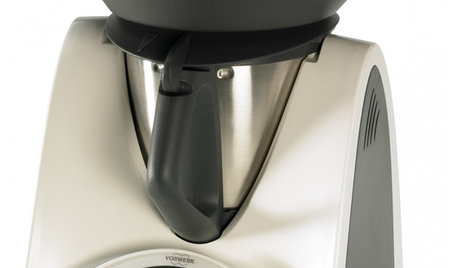Pressure canner won't cool down
Is there something wrong with my All American 921 pressure canner? I canned six quart jars of hot-packed tomatoes for 45 minutes with a 10-lb weight, turned off the gas stove, waited till the pressure gauge read zero, and waited an additional hour. But the weight still hissed when I took it off. I removed the lid, waited five minutes, and removed the jars. The liquid was still bubbling, and the liquid level was 2.5" from the top rather than the 1/2" I started with. I doubt if that was all trapped air among the fruit so I suspect siphoning.
So I canned another 4 quart jars of hot-packed tomatoes, this time waiting 2.5 hrs after the gauge read zero before lifting the weight. But it still hissed and the jars were still bubbling.
Fortunately there were no tomato bits visible under the rings or the disks, and all the jars had a good vacuum seal. But it seems crazy to have to wait so long for the canner to cool down before lifting the weight. I fear that if I waited until there was no hissing, I'd only be able to get two canning sessions per day. Any idea why this is happening, please?
Thanks,
...Terry
Comments (21)
digdirt2
10 years agolast modified: 9 years agoNo it isn't the canner, it is the methods you are using.
First, no tomatoes require 45 min processing in a pressure canner so I don't know where those instructions came from
Second, how much water was in the canner? That plays a big role in how long it takes to cool down. The normal cool down time is about 45-60 min.
What was the weight activity while it was running? Was it jiggling constantly? If so then the heat was set way too high. AA canners only jiggle 3-4 times per minute when at pressure. If you kept it going constantly then that overheating could increase the cool down time required.
Did you adjust the heat a lot during the processing time? if so that is what caused the siphoning of liquid out of the jars. Have you used this canner before or is it new to you?.
It is normal for the jars to be bubbling when removed and it is also normal for a small amount of steam hiss - very brief - when the weight is removed. Did you wait the 10 min between removing the weight and removing the lid? If not more siphoning happens.
Need much more info from you please to fully ID the problems.
Dave
readinglady
10 years agolast modified: 9 years agoI'm wondering if you used a boiling water bath time for a pressure canned product. If you tell us whether your tomatoes were in water or juice or crushed we can check against the recommended times.
Also is it possible you put in way too much water, i.e. an amount say halfway up rather than the much smaller recommended amount? If that's the case then the canner would take a long time to cool down from all that liquid.
It takes a little troubleshooting but once the issue is identified I doubt you'll find there's anything seriously wrong with the PC. The All-American 921 is a champ but there is a learning curve.
Carol
Related Professionals
Eagle Landscape Contractors · Middletown Landscape Contractors · Milton Landscape Contractors · Paso Robles Landscape Contractors · Petaluma Landscape Contractors · Ridgewood Landscape Contractors · Salem Landscape Contractors · Washington Landscape Contractors · Cape Coral Roofing & Gutters · Plainfield Roofing & Gutters · The Colony Roofing & Gutters · West Orange Roofing & Gutters · Milpitas Driveway Installation & Maintenance · Springfield Driveway Installation & Maintenance · Wauconda Driveway Installation & MaintenanceTerry
Original Author10 years agolast modified: 9 years agoHere's another of those postings that starts with "Oh, I feel so stupid". Carol & Dave got it right, I think I used the hot water bath time (45 min) instead of the pressure canning time (10 min). This is from the All American's "Instructions & Recipes" book, page 33. But I only had 1.5 - 2" of water, so I don't understand why 2.5 hrs of cooling after the gauge read zero wasn't enough to stop the heavy hissing when I lifted the weight. After all, all the meat recipes process for over 45 minutes.
I tried my best to get 3-4 jiggles per minute, but probably had over double that in some minutes and 1-2 jiggles in other minutes. So maybe Dave's right that there were temperature variations causing siphoning, but that too shouldn't affect the cool-down time.
I can't recall if I waited 10 minutes after weight-removal before lid-removal. Is this advised in addition to waiting 5 minutes after lid-removal before jar-removal?
Gulp - I'll take a deep breath and try again. I'll be canning some soup later today, probably the Ball Blue Book's Spiced Tomato Soup. I'll be sure to have just 1.5" water level, 3-4 jiggles per minute (if I can!), no hissing before weight removal, 10 minutes before lid removal, and 5 minutes before jar removal. Sound good?
Hmm, my only question now is, how long should I process if the recipe says 20 minutes for pints and I'm using Atlas mason jars that hold 2 & 3/4 cups? The recipe doesn't give a processing time for quarts so i can't use that as a fall-back.
I'm very grateful to Carol & Dave for their time & advice, and especially for their patient and positive attitude. This stops me from burying my canner and buying Campbell's. Deep breath, here I go...
...Terrymyfamilysfarm
10 years agolast modified: 9 years agoFirst of all, I don't use the American canner. I use both Presto and Mirro, large 22/23 qt canners. I personally think the larger canners take longer to cool down. I have found that it takes just about the same amount of time to cool down (no heat under) as it does to process. Then add the extra 10 minutes after removing the weight and lifting the lid.
I do several canners per day when I have the need, but I do have help with the prepping and jarring.
digdirt2
10 years agolast modified: 9 years agoTerry - as Carol said, pressure canning has a learning curve. It isn't something you can just jump into with both feet. Practice runs using just water is always recommended before working with and possibly wasting foods. You first have to learn how to balance the heat, get the right weight movement, use the correct amount of water (2-3" not 1 1/2), and how to prevent the siphoning.
And don't use your manual for instructions. They are notorious for being outdated. Use the step-by-step instructions provided by NCHFP or the Ball Blue Book.
my only question now is, how long should I process if the recipe says 20 minutes for pints and I'm using Atlas mason jars that hold 2 & 3/4 cups
You can't. You can never go to bigger jars than called for by the recipe. You can use smaller jars than called for and use the same processing time, but never larger jars.
Dave
backyardbum - as I said above - 45-60 min. is the average normal. It varies depending on the size of the canner and the extra large AA take closer to 60. If it takes longer than an hour something else is being done wrong.
Here is a link that might be useful: NCHFP - How to use a pressure canner
Linda_Lou
10 years agolast modified: 9 years agoWhen you say Atlas 2 and 3/4 cups, are these spaghetti sauce jars ? If so, they are not meant for canning. They were only jars that held a product for you to bring home from the store. They are "one trip" jars, as we call them.
Recyle or use them for dry storage, not canning. I know there are Atlas canning jars, but wondering why these are an odd size.I agree, never go up in size when a recipe gives a specific size.
You do use 2 to 3 inches of water in the canner. Then, the wait time after the pressure is zero will be 10 min. when pressure canning. Remove just the weight. Do not open the canner lid. Set the timer for 10 min. Then remove the lid and remove the jars.
That is not good that it is taking so long since you can get a thermal loving bacteria to start growing in the jars since they are sitting in there so long.It is for water bath canning you remove the lid, set the timer for another 5 min. then remove the jars.
Did you check to see if the vent pipe is really clear ? Take a pipe cleaner or a piece of heavy string and "floss" the vent pipe.
Never heard of one taking that long to depressurize.
Sure, the AA's are heavier, but that is still too long.This post was edited by linda_lou on Mon, Sep 2, 13 at 15:17
calliope
10 years agolast modified: 9 years agoDid you have it tested before you began the season? If it is 'off' you may have more pounds of pressure than the zero reading indicates. There are other issues going in, but it bothers me that your gauge is reading zero pounds pressure when it obviously isn't.
readinglady
10 years agolast modified: 9 years agoI do have an A-A 921. It does take longer than my Prestos to cool down but nothing like you're describing, even if I'm canning fish.
So definitely check the vent to make sure it's blocked. Also it may be a combination of factors. If, for instance, there was too much water in the canner + the heat was too high so the pressure was actually closer to 15psi + the canner vent was partially obstructed . . . Well, you get the picture.
Once the canner is up to pressure it shouldn't take much heat to maintain and you can gently reduce to a consistent medium or medium-low setting, which should also take care of the siphoning.
I do want to second two comments made by previous posters: Do become familiar with your canner by running a load of colored water and make notes of the heat setting that works best for your range. Don't consider yourself ready until you can run a load of jars and the water in the canner remains clear.
Second, use the manual only for operating and maintenance. They are notorious for out-of-date processing times and instructions.
I've linked to the NCHFP instructions for pressure canners. I think that may also address some of your concerns.
The weight on the A-A is machined for perfect accuracy. If there is an inconsistency with the gauge (reads high or low) trust the weight. If the gauge reads 10.5 lbs. don't turn the heat up. An accurate gauge will read slightly less than 11 lbs. because the weight is machined for 10.5 (240 degrees), which is the pressure determined to be necessary to kill botulism spores.
Good luck. You'll get there.
Carol
Here is a link that might be useful: NCHFP Using Pressure Canners
wcthomas
10 years agolast modified: 9 years agoIf you left the weight on for an hour after reaching zero pressure, you may have created a vacuum in the canner as it cooled. The hissing you heard may have been air being sucked in to the canner, rather than steam coming out.
My AA 930 canner with a full load of pints usually takes only about 30 minutes to cool down from 10 psi to zero pressure. I then immediately remove the weight to avoid vacuum, and crack the lid a bit so it doesn't get stuck during the 10 minute cooling period. A stuck AA lid can be difficult to remove - been there, done that!
TomNJ
Terry
Original Author10 years agolast modified: 9 years agoHmm, I still have the problem. Yesterday I made a double batch of Katie's Tomato Garlic soup, four quarts and a pint bottle processed for 70 minutes with a 10-lb weight jiggling. It took the normal hour for the gauge to show a drop from 11 lbs to zero BUT there was still strong hissing when I lifted up the weight 4.5 hours later. I didn't want to leave it overnight so I slowly removed the weight over about five seconds of hissing, waited ten minutes, then removed the lid and the jars. The 2.5" of water appeared tomato-free. This morning I removed the jar rings and only one of the five jars had a slight greasy feeling where the ring had been, implying just a little siphoning. The jars have 1.5" headspace, down from the 1" when filled but not unusually so.
So what could be causing the long cooldown? Well, it isn't the processing time, as many of you have canned this 70 minute recipe without 5.5 hours before lid removal. It isn't the amount of water in the canner, 2.5" before adding the jars.
It isn't improper exhausting, as I had a full 10 minutes of funnelling steam before adding the weight. It isn't a blocked vent, as the problem is a long cooldown while the vent is covered by the weight; besides, the exhausting was unimpeded; I also flossed the vent and found no blockage.
It isn't a faulty gauge, as I only use the gauge for verification, using the jiggling 10-lb weight as my correct-pressure indicator. I made sure my 3-way weight (5, 10, or 15 lbs depending on which hole you mount it on) was on the 10-lb hole. Nonetheless, Calliope is right that I should have the gauge tested if there's still hissing long after the gauge displays zero.
The only thing I continue to be uncomfortable with is controlling the amount of jiggling, possibly causing the heat to be too high. (But then I would have expected the gauge to read above 11 psi, which it never did.) My gas stove's dial goes from low to high over a 12-unit scale (Low, 1 to 10, then High), and I use the largest element so it can get up to pressure fastest (on High). Once the jiggling starts I turn it all the way down to just above 1. After a minute of near-continuous jiggling, it settles down to about 3-6 jiggles a minute, but some minutes had 8 jiggles and at one point it went 2 minutes with no jiggles. Fortunately the gauge showed the pressure stayed above 10 lbs. Anyways, last night I moved the pot to a smaller element once jiggling started, hoping I'd have better heat control, but even there it would jiggle 3-6 times a minute with the stove element dialed at 2. I don't know if this wide-ranged jiggling could cause a 5.5 hr cooldown, though.
Hmm, TomNJ's post offers a new possible cause, a vacuum in the canner due to long cooling. Maybe that explains why there is still pressure inside when the gauge reads zero. Tom, was the vent hissing when you removed the weight after 30 minutes? Is that okay? I thought that if you slightly lifted the weight and heard hissing, you were supposed to put the weight back down and try again later, until there was no hissing. Am I wrong on this? What do others think about this possible cause?
Thanks to Carol, Dave, TomNJ, Linda_Lou, and Calliope. Thanks also for the NCHFP guide link and the warning about outdated canner manuals and the warning about Atlas Mason jars. (That last one burns me, that Classico sells a jar with 'Mason' on it but has a disclaimer saying it shouldn't be used as a Mason jar. But that's another thread.)
...Terrydigdirt2
10 years agolast modified: 9 years agoBest I can figure from all of this is either a) your gauge is off. Reading zero when it still has pressure inside isn't normal. And not dropping below 11 lbs when you went 2 min without jiggling also isn't normal. I would suggest the test below. **
Or b) what sounds like alot of steam coming out the vent really is just the normal amount. IF the gauge is correct and IF the heat is turned off, there simply isn't any way much pressure can be left in the canner, much less any hours later.
** Get your gauge tested or at the very least run a test on it for accuracy. 3 inches water in the canner (no jars and no food) and the 15 lb weight. Run it up to when the 15# weight is consistently jiggling and the gauge should read 15.5 lbs-16 lbs. If it doesn't then the gauge is off.
Not as accurate a test as having a prof. one done but is still a valid indicator.
Dave
morz8 - Washington Coast
10 years agolast modified: 9 years agoI don't have an All American canner, haven't run into any pressure dropping issues the times I've canned with my SIL and she's been using hers, but, does anyone think possibly what the OP is hearing when she lifts that weight after so much cooling time has passed is actually air rushing in, not out, of the canner?
It concerns me a little her canner is sitting still sealed with the jars inside for as long as 4 and 5 hours after processing has finished, can't be the ideal temperature for her product.
readinglady
10 years agolast modified: 9 years agoI am concerned about the risks of continuing to can product when the principal issue hasn't been resolved.
There is definitely a risk in leaving product in the canner for several hours with the heat off. Certain bacteria will grow under those conditions.
You might consider phoning Wisconsin Aluminum Foundry and sharing your problem with them. They are the experts on their product and have been helpful in the past.
I've linked below to their customer contact phone number.
Carol
Here is a link that might be useful: All-American Customer Contact
digdirt2
10 years agolast modified: 9 years agoIt concerns me a little her canner is sitting still sealed with the jars inside for as long as 4 and 5 hours after processing has finished,
Concerns me too. A great deal. Even more concerned about the fact that food continues to be processed, and potentially wasted and improperly processed without first learning all the basics about how to do it. But the dialogue is sporadic at best and over several days while the processing continues. And warnings about the hazards of that were given early on yet were repeated.
Terry - you really need to stop and learn. If not here then somewhere.
Now I am having trouble relating to a gas stove with a 1-12 scale on the dial and it only needs to be on 1 to maintain pressure??? if that is really the case then it would seem that it should never be turned all the way up without risking damage to the canner. That is simply too big a ratio of heat settings. What's the BTU max on this stove?? My 30,000 BTU burners have infinite controls but even they require more than the lowest setting to maintain pressure and I would NEVER turn them all the way up to high as my canner would be destroyed.
The average home stove has 7000 BTU burners, a commercial one has 12,000 BTU burners (max recommended). Is this a commercial stove??
does anyone think possibly what the OP is hearing when she lifts that weight after so much cooling time has passed is actually air rushing in, not out, of the canner?
Possible I guess but I don't think so as it is a totally different sound. But then I have an experienced ear.
But as i said with my AA even after the gauge has returned to zero (takes approx. 40 mins. to get there) and been there for 10 min. when i lift slowly up on the weight a very low hiss is heard and a very small amount of steam escapes. It isn't pressure - my gauge is accurate - just some residual trapped steam. It take off the weight, wait 10 mins. and then remove the lid, wait 5 min. then lift out the jars. All is fine.
Lots of questions that need answers before more canning is done.
Dave
wcthomas
10 years agolast modified: 9 years agoTo paraphrase Joe Pesci in "My Cousin Vinnie", unless the laws of physics don't apply in your kitchen, there is no way that canner can still be under pressure after 5.5 hours of cooling :-) My 30 quart AA often cools to zero pressure on the gauge in just 20-25 minutes, with no hissing when I remove the weight. I have to think you created a vacuum from the long cooling and are hearing the hiss of air being sucked in.
The instruction manual with my AA canner says: "To avoid a vacuum, which will cause the cover to be drawn to the bottom very tightly, you must remove the pressure regulator weight from the vent pipe as soon as the pressure gauge indicator reaches the black section at zero p.s.i. and then remove the cover. The longer you wait before removing the pressure regulator weight, the more vacuum will form, pulling the cover tighter and tighter to the bottom".
Re the jiggling, the manual says to adjust the heat to give 1 to 4 jiggles per minute. Your 3 to 6 jiggles is not a problem - mine often varies but the gauge remains steady. Just avoid letting it giggle constantly or you may have a little too much pressure, or go too long without a giggle. I spend the first five minutes fine tuning the heat to get as close as I can to the recommended giggle rate, but a little off is not an issue. A setting of 2 to 3 on my gas stove dial is usually enough to maintain a good giggle rate.
TomNJ
wcthomas
10 years agolast modified: 9 years agoOkay, canners don't "giggle", but I do when I misspell "jiggle"! :-)
And since I am now growing and canning at our new summer home in the Blue Ridge Mountains of southwest Virginia, I need to change my signature!
TomNJ/VA
Terry
Original Author10 years agolast modified: 9 years agoThanks, TomNJ, for the backup info supporting your suggestion that the long cooldown is due to a vacuum. I think you've found my culprit in the AA instruction manual section you quoted. I've just re-read my manual and found the same quote.
Equally important, I believe I've found my principal error that led to the vacuum-forming: subjectivity. In my first posting (Sept 1), posing the long cooldown problem, I explained that I left the weight on well after the gauge read zero pressure because I heard hissing when I slightly lifted the weight. My thinking was that I shouldn't fully remove the weight if I still heard hissing when I slightly lifted it -- that I should wait until there was no hissing. Dave's first post said "it is also normal for a small amount of steam hiss - very brief - when the weight is removed". Since I felt I had a long hiss (several seconds, pffffffffffffffffffffffffffffffffffffffffffffffffffffff) vs pffft) I thought what I had was abnormal. What I'm now thinking is that my hissing was just normal and I should have removed the weight, waited 10 minutes before removing the lid, and all would have been fine (no vacuum, no long cooldown).
So that's what I'll try the next time, but just canning some colored water in a test like linda_lou first suggested in her Sept 2 posting.
Thanks to all of you for your concerns about the health risks of leaving the jars in the canner for several hours. I think Dave was wrong, though, in saying "warnings about the hazards of that were given early on yet were repeated". The warning was only mentioned once by linda_lou before my Sept 2 canning, and it so happens I didn't get her message until after my Sept 2 canning. I haven't done further canning after reading her message, which was subsequently backed up by others.
Similarly, I didn't read linda_lou's recommendation to test with water rather than food until after my Sept 2 canning. I haven't done further canning after reading her message, which was subsequently backed up by others.
I'm grateful for the suggestion to test with water before risking food and health. I'm unhappy that such a suggestion isn't in the owner manual, but I can't blame anyone here for that. I'm sad that a respected poster thinks I ignored warnings repeatedly (and said so to the world). I'm crying at the thought that my food might be dangerous to eat, given how much love and effort I put into growing and canning it.
Such is life. Tea time.
...Terrydigdirt2
10 years agolast modified: 9 years agoTerry I didn't say you ignored them only that you apparently didn't read them. And so they were repeated because you kept right on canning things despite the problem.
Apparently you weren't checking the follow-up replies or checking your email. More importantly you weren't putting canning on hold until the problems were resolved. Enthusiasm can be our enemy at times.
I posted about the water-only tests at 9:58 am Mon hoping to catch you before you started your Monday afternoon canning. Linda Lou repeated it at 13:00 on Monday. Yet you apparently didn't read either one until much later in the day. And in the mean time you continued canning and the problems were repeated despite our efforts to get you to slow down until the problem was solved. And we heard nothing back from you until 24 hours later.
The message was clear from the first post - something is wrong, we will help you figure it out, give us more information, slow down.
When anyone is having serious problems with pressure canning and engaged in a dialogue with others trying to help then close follow up in that discussion can be crucial and save a lot of wasted work, time, and food.
Dave
wcthomas
10 years agolast modified: 9 years agoTerry,
If your food was processed for the full time and the jars are vacuum sealed, I believe they should be safe to eat. I think the bacteria that was referenced from holding the jars hot for five hours only affects flavor, not safety, although others may correct me if I am wrong on this. Ir's called flat sour spoilage, which i found described as follows:
"Flat sour spores are not directly pathogenic to people. These organisms only cause spoilage in canned foods if the product is not cooled properly. If not cooled properly, the organism has the potential to grow and decrease the shelf life of the canned foods. A food spoiled by flat sour organisms will produce a sour smell and taste. Flat sour spore testing is of most interest for food processors that want to ensure a long shelf life of a product and to prevent early spoilage in sensitive tomatoes and dairy food products."
If it were me I would taste the food (provided it was fully and properly processed and the jars are sealed) and if it tastes and smells fine consume the batch with priority. Best to wait for others to chime in on this, however, in case I am off base here.
TomNJ/VA
This post was edited by wcthomas on Tue, Sep 3, 13 at 20:53
Terry
Original Author10 years agolast modified: 9 years agoHi, everyone. I finally got around to testing my pressure canner with a load of colored-water jars. After 10 minutes of jiggling, it took 30 minutes for the gauge to reach zero. I waited another 15 minutes to be sure, then slightly lifted the weight so it could release any remaining pressure slowly rather than all at once. It hissed for about 4 seconds, then I completely removed it. Ten minutes later, I removed the lid. The results? The jars still had all their colored water (no siphoning) and the 2.5" of water in the canner was clear - yay!
So I think I was overreacting about the residual pressure in the canner after the gauge read zero. The real test will be if I get the same no-siphoning results when I do the above with food in the jars. I don't have any canning planned soon, but I'll let you know the results when I do.
Thanks again to all of you for your questions and advice.
....Terry

















backyardbum